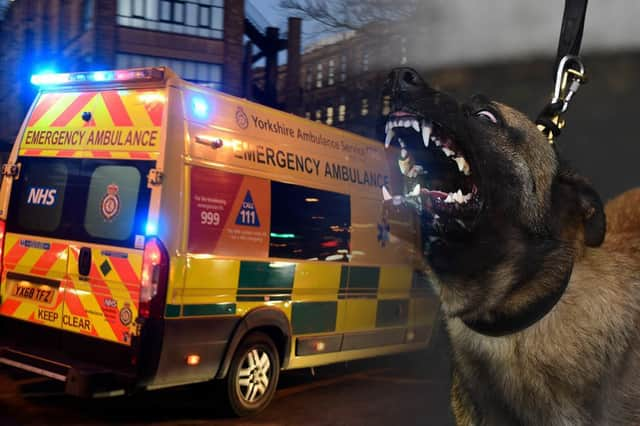Dog bite hospitalisations: how serious bite injuries have increased in England hospitals between 2021 and 2022


Hospitals in England had to deal with an average of four dog bite cases among children per day over the last year, NHS data has revealed.
According to figures seen by NationalWorld, there were 1,516 cases of children under the age of 15 having to attend hospital for dog-related injuries between April 2021 and March 2022.
Advertisement
Hide AdAdvertisement
Hide AdThis period was also the second worst year since records began in 2007/08 for hospitalisations of all age groups where the cause of injury was listed as ‘bitten or struck by a dog’.
The news follows a boom in dog ownership during the pandemic, with 12 million dogs now living in the UK according to estimates by the Pet Food Manufacturers’ Association - a rise of 3.1 million on 2019.


It also comes just days after toddler Daniel John Twigg was killed by a dog in Rochdale, and only a matter of weeks after a separate incident saw a 17-month-old girl mauled to death by a dog in St Helens.
So, what exactly does the dog attack hospital case data show - and what’s being proposed to tackle it?
What does NHS dog attack data for England show?
Advertisement
Hide AdAdvertisement
Hide AdNationalWorld has seen NHS Digital data for cases of people being ‘bitten or struck’ by a dog in England since April 2007.
The figures show what are known as ‘finished consultant episodes’ (FCEs).
One FCE counts as one instance of a patient being cared for by a single consultant at a particular healthcare site.
So, a single patient could be counted twice if they have to be transferred to a different consultant or hospital.
Advertisement
Hide AdAdvertisement
Hide AdHowever, in most cases, an FCE is equivalent to a person being admitted to hospital.
Loading....
What this NHS data shows is that the period running from April 2021 until March 2022 saw a 7.5% year-on-year increase in children under-15 having to be treated in hospital for injuries caused by a dog.
In total, 1,516 children were recorded as having to be cared for in hospitals compared to 1,410 over the same period between 2020 and 2021.
This figure includes 614 children aged four and under (an 8.7% annual increase), 524 five to nine-year-olds (a 2.8% decrease) and 378 kids aged 10 to 14 (a 23.5% rise).
Advertisement
Hide AdAdvertisement
Hide AdThe figures mean an average of four children per day had to receive care for dog-related injuries.
2019/20 was the worst year for attacks on those aged 14 and under, with 1,570 cases recorded.
Loading....
That year also happened to be the worst overall for dog attack injuries across all age groups, as 8,933 children and adults had to receive medical attention, compared to 8,655 in 2021/22.
‘Major increase’ in over 60s dog bite hospitalisations
As well as an increase in dog attack hospitalisations involving children, admissions also reached record highs across several adult age groups.
Advertisement
Hide AdAdvertisement
Hide AdAn average of 20 adults per day in England received care for injuries sustained as a result of an incident involving a dog.
It was a record year for admissions involving those aged 35 to 39 (497 incidences - a 15.6% year-on-year rise), 40 to 44 (547 cases - an increase of 17.4%) and 55 to 59 (704 FCEs - 15.2% up).
But the biggest annual increase was seen amongst those aged between 75 and 79-years-old, with a record 385 elderly people requiring medical care - an increase of 68.1% compared to 2020/21.
While the figures were not the worst on record, there were also troubling increases in cases among 70 to 74-year-olds (up 45.4%) and those aged 80 and over (41.4% higher).
Comment Guidelines
National World encourages reader discussion on our stories. User feedback, insights and back-and-forth exchanges add a rich layer of context to reporting. Please review our Community Guidelines before commenting.
